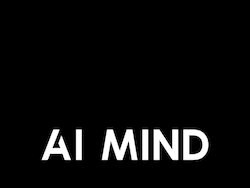

In recent years, large language models (LLMs) have demonstrated remarkable potential in scientific discovery through automated experimentation and planning.
While research has concentrated on computational design of molecular materials and crystal structures — domains rich in digital datasets — the more complex field of materials synthesis science remains underexplored. I contend that AI+Materials Synthesis represents a critical new frontier. Material synthesis presents unique challenges through its multiscale physicochemical complexity and experimental nature.
The following discussion examines why this integration is necessary and how it might bridge the gap between correlative patterns and causal understanding of synthesis mechanisms.
In short, create materials and control their creation.

Material synthesis is fundamentally a cyclical process of refinement. As depicted in the Figure 1, synthesis follows a continuous loop of experiment conditions, variable adjustment, and diverse observations. This iterative cycle drives our understanding forward, with each revolution potentially bringing us closer to materials with desired properties.
The synthesis mechanisms can be divided into the combination of correlation and causality. While correlations are abundant in scientific literature — like the observation that ligands bind predominantly to sharp tips of gold nano-bipyramids with high surface energy — true causal understanding remains elusive. Another tips might be, sometimes we even mistakenly treat the correlations into causality. That is the knowledge scope issue.
Consider how temperature affects a material’s formation, as an example of nanoparticles: we observe smaller silver nanoparticles (15–25nm) at lower temperatures (20–25°C), but the causal mechanism involves nucleation kinetics following the relationship: Nucleation rate ∝ exp(-Ea/kT)
Synthesize materials with expected property involves the understanding of underlying causality — based on physicochemical principles or laws.
Deep learning approaches, particularly graph neural networks (GNN, refer to https://en.wikipedia.org/wiki/Graph_neural_network), offer promising pathways to bridge this gap by modeling complex synthesis pathways and extracting causal relationships from learned representations, potentially transforming materials discovery from correlation-driven to causality-informed science.

Graph neural networks excel at capturing complex relationships in high-dimensional space. They transform materials discovery from correlation-driven observations to causality-informed science by learning from extensive training data. However, they struggle with hierarchical structure and multi-scale interactions critical in material synthesis. We actually need this in semantic level — that’s why the scientists work with strict logics.
Yes, it just like a robot saying a lot of words through human languages, but with less logics.
Current large language models with the ability of super intelligence operate primarily in the realm of correlation, yet their potential extends toward capturing elements of causality. Their responses are fundamentally based on the grasping of physicochemical mechanisms extracted from scientific literature. This represents both their greatest strength and their most significant limitation.
We utilized LLMs such as Vicuna, Qwen and ChatGPT etc, to test their ability in grasping underlying physicochemical principles. Unlike purely statistical approaches, LLMs can integrate knowledge across disparate studies, potentially identifying patterns invisible to human researchers working within specialized subfields. In short, they excel at recognizing scientific mechanisms described in literature and can rapidly synthesize information across thousands of papers.

In the rapidly evolving landscape of LLMs, performance metrics remain a critical benchmark for assessing progress. As illustrated in the figure of Experiment Results, model size demonstrates a clear correlation with accuracy, with larger architectures consistently outperforming their smaller counterparts. The x-axis represents different models categorized by parameter count (from 7B to Large size), while y-axis displays the accuracy scores ranging from 0.45 to 0.85. Notably, the largest models (represented by the Anthropic “A” logo) achieve remarkable accuracy of 0.85, substantially outperforming smaller variants. This performance gap underscores the continuing importance of scale in advancing model capabilities, though the precise architectural differences between models likely play a significant role in the variations observed within similar size categories. Well, the scale is just one method to improve further.
The word Understanding may better be the Grasping. Though LLMs behave like humans, they still fail is in questions requiring novel mechanistic reasoning. They cannot simulate the physical world from first principles. When asked to explain the complex physicochemical processes of material formation, they struggle to bridge the gap between known correlative patterns and true causal understanding.
This limitation stems from their fundamental architecture:

Literature mining through LLMs presents a powerful approach to accelerate materials science research. By extracting patterns from thousands of papers, these models can identify correlations that might suggest causal mechanisms.
Yes, the key advantage of such systems is still the speed and the breadth. While human researchers might spend months reviewing literature in a narrow domain, LLMs can process the entire corpus of materials science in seconds, identifying patterns across subdisciplines.
Pu, Yingming, et al. “Leveraging Large Language Models for Explaining Material Synthesis Mechanisms: The Foundation of Materials Discovery.” AI for Accelerated Materials Design-NeurIPS 2024.

Thanks for being a part of our community! Before you go:
<hr><p>Physicochemical Principles in Material Synthesis: From Language Modeling Perspective was originally published in AI Mind on Medium, where people are continuing the conversation by highlighting and responding to this story.</p>